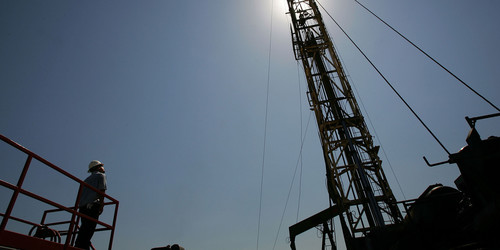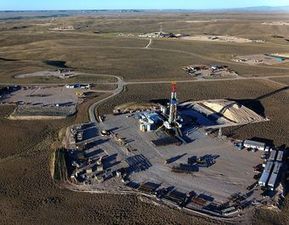The team took off-the-shelf geothermal generators and hooked them to pipes carrying boiling waste water. They’re set to flip the switch any day. When they do, large pumps will drive the steaming water through the generators housed in 40-foot (12-meter) containers, producing electricity that could either be used on site or hooked up to power lines and sold to the electricity grid.
Sourced through Scoop.it from: www.bloomberg.com
>”Oil fracking companies seeking to improve their image and pull in a little extra cash are turning their waste water into clean geothermal power.
For every barrel of oil produced from a well, there’s another seven of water, much of it boiling hot. Instead of letting it go to waste, some companies are planning to harness that heat to make electricity they can sell to the grid.
Companies such as Continental Resources Inc. and Hungary’s MOL Group are getting ready to test systems that pump scalding-hot water through equipment that uses the heat to turn electricity-generating turbines before forcing it back underground to coax out more crude.
Though the technology has yet to be applied broadly, early results are promising. And if widely adopted, the environmental and financial benefits could be significant. Drillers in the U.S. process 25 billion gallons (95 billion liters) of water annually, enough to generate as much electricity as three coal-fired plants running around the clock — without carbon emissions.
“We can have distributed power throughout the oil patch,” said Will Gosnold, a researcher at the University of North Dakota who’s leading Continental Resources’ project well.
Geothermal power also holds out the promise of boosting frackers’ green credentials after years of criticism for being the industry’s worst polluters, says Lorne Stockman, research director at Oil Change International, an environmental organization that promotes non-fossil fuel energy.
“This is one way to make it look like the industry cares about the carbon issue,” he said. Even if steam generates less carbon than other oil field power sources, “if you’re in the business of oil and gas, you’re not part of the solution.”
Cheap Oil
Then there’s the money. With crude at less than $50 a barrel, every little bit can help lower costs. At projects like the one being tested by Continental Resources in North Dakota, a 250 kilowatt geothermal generator has the potential to contribute an extra $100,000 annually per well, according to estimates from the U.S. Energy Department.
That’s not big money and the $3.4 million cost to test the technology is still too much to apply to each of Continental’s hundreds of wells. Yet if the company can lower the costs of the technology, it will not only generate electricity it will also extend the economic life of wells, making them more profitable, said Greg Rowe, a production manager with Continental Resources. […]”<








